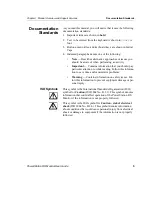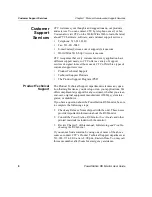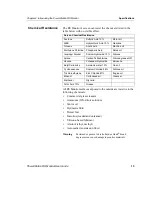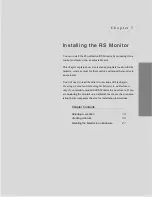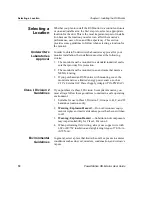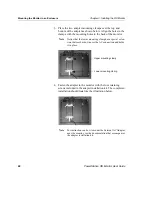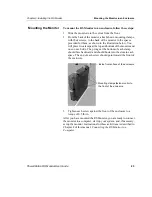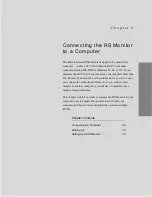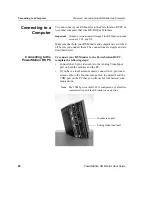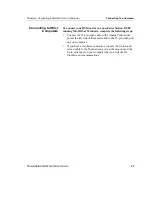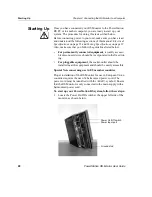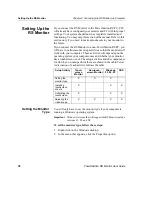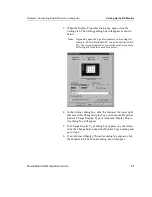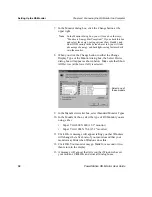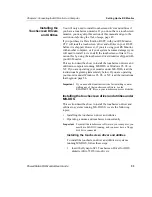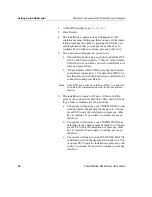
Chapter 3: Installing the RS Monitor
Selecting a Location
PowerStation RS Monitor User Guide
19
Screen considerations
The monitor’s screen is resistant to a variety of chemicals. See
Chemical Resistance on page 13 of this manual for a complete list
of these chemicals.
Electrical Guidelines
To minimize unwanted electrical interference, select a location
away from machinery that produces intense electrical noise. If this
noise cannot be avoided, isolate input power to the unit and sepa-
rate all data communication cables used with the unit from power
lines.
See Electrical Specifications on page 12 of this manual for a list
of the RS Monitor’s electrical specifications. Make sure that your
power source is completely compatible with the monitor before
starting the unit.
Temperature/
Humidity Guidelines
You can safely operate the RS Monitor within the temperature
range specified in Environmental Specifications on page 11 of this
manual. However, if the monitor is mounted in an enclosure,
remember that the temperature within the enclosure is generally
higher than the external temperature. Thus, if the monitor is oper-
ating inside an enclosure at temperature levels above its rated
ambient temperature, you must cool the enclosure.
Be sure to choose an area for the monitor that is free from moisture
or condensing humidity.
Enclosure Guidelines
Select an enclosure that is large enough to allow free airflow
around the monitor. You should allow a minimum of 2 inches
between the inside of the enclosure and the top, bottom, sides, and
back of the monitor.

